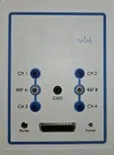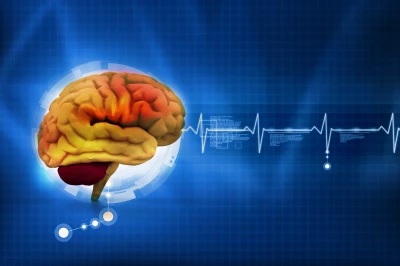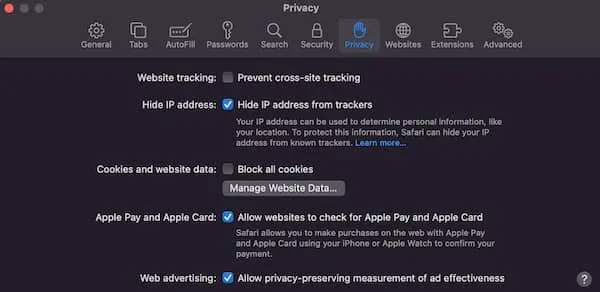What Is Neurofeedback: Guidelines for Practice.
In 2019, the International Society for Neurofeedback & Research changed its name to the International Society for Neuroregulation & Research (ISNR). (This was done as a result of new technologies and methods of working with the human brain that have been and continue to be developed.) This update was a result of including additional brain technologies and methods.
The International Society for Neuroregulation and Research (see www.isnr.org) is the largest group of professionals involved in the practice, teaching, and research of neurofeedback (NFB). Some members of ISNR have sought and received certification by the Biofeedback Certification Institute of America (see www.bcia.org). Members of ISNR subscribe to a code of ethics providing an added measure of accountability to the standards of their profession. Additionally, ISNR is committed to supporting new developments by publishing a professional journal and newsmagazine, by producing a well-attended annual conference, and by encouraging large NFB studies through The Foundation for Neurofeedback and Neuromodulation Foundation (ISNR’s research arm).
These guidelines have been adapted to meet the requirements necessary for the USA, AMA, and insurance company requirements for reimbursement. ISNR recognizes that these guidelines may need to be adapted by specific professions and licensures and may not have direct application to different countries and their specific requirements for health care providers and their respective licenses; and therefore, may need to be adapted /modified for individual countries.
Below are the updated and revised guidelines (2024) for ISNR members to read, understand, adhere to, and follow. These guidelines were edited and ratified by the ISNR Board of Directors on July 28, 2024.
What is Neurofeedback?
Neurofeedback (NFB) is a therapeutic intervention utilizing a brain-computer interface (BCI). An individual’s brainwave activity is tracked in real-time (with a sensor), is interpreted (with a decoder), and then information is used to encourage the individual to modulate specific brainwave activity via ‘feedback’(effector). Through behavior modification and learning processes self-regulation of brain and central nervous system (CNS) function is taught.
The goal of NFB is to address reported symptoms, improve health and well-being, or improve human performance. Neurofeedback has been practiced for well over six decades.
Watch this short video to learn the basic points of neurofeedback.
What is Neurofeedback training?
During NFB, sensors are placed on the scalp and then connected to electronic amplifiers and computer software that detects and records specific brain activity.
Resulting information is fed back to the trainee with the understanding that changes in the feedback signal indicate whether the trainee’s brain activity is within the desired range. NFB is most commonly done with visual and/or auditory feedback that promotes changes in brain patterns and learning, and results in changes in physical, emotional, and cognitive states.
Types of Neurofeedback
There are several types of neurofeedback:
- Traditional 1, 2, 4+ channel power training
- Z-Score neurofeedback
- Connectivity and coherence training
- Infra-Low neurofeedback
- Infra-Slow neurofeedback
- Functional Magnetic Resonance Imaging (fMRI)
- Haemoencaphalography (HEG).
Some equipment that has been developed and placed under the neurofeedback umbrella does not employ classic neurofeedback interventions such as those listed above. For example, systems that deliver low-level electrical currents into the brain.
Adjunctive Neuroregulation Strategies include but are not limited to (heart rate variability, photo-bio modulation, transcranial electrical stimulation (CES), pulse electromagnetic frequency (pEMF), vagus nerve stimulation, transcranial magnetic stimulation (TMS), etc.
ISNR encourages all newcomers to the field to start with the basics of learning simpler models such as traditional 1, 2, and 4 channel power neurofeedback training before advancing to newer or more advanced types of neurofeedback training and protocols.
There are a growing number of manufacturers of neurofeedback equipment. However, not all equipment is the same and not all equipment performs the same functions nor provides the same “types” of neurofeedback (see list of equipment manufacturers).
There are professional grade devices developed, marketed, and aimed at the professional provider of services. The majority of these devices are high quality and offer the prospective clinician many options of training and associated costs.
There are prosumer and consumer grade devices developed, marketed and aimed for the public to buy over the counter and implement on their own. These devices are typically limited in functionality and flexibility and may utilize proprietary or confidential training metrics.
The FDA States:
Sec. 882.5050 Biofeedback device.
(a) Identification. A biofeedback device is an instrument that provides a visual or auditory signal corresponding to the status of one or more of a patient’s physiological parameters (e.g., brain alpha wave activity, muscle activity, skin temperature, etc.) so that the patient can control voluntarily these physiological parameters.
(b) Classification. Class II (special controls). The device is exempt from the premarket notification procedures in subpart E of part 807 of this chapter when it is a prescription battery powered device that is indicated for relaxation training and muscle reeducation and prescription use, subject to § 882.9.
ISNR supports that it is the ethical responsibility of equipment companies and resellers to only sell neurofeedback equipment and software to licensed professionals within the umbrella of healthcare.
Purchasers of neurofeedback equipment and software should be able to demonstrate competency in providing neurofeedback services as evidenced by, but not limited to, having proper training on the equipment and software by the manufacturer; and neurofeedback specific training by a licensed professional in the use of neurofeedback equipment and software (preferably being mentored by a BCIA Certified clinician familiar with the brand of hardware and software the clinician is using).
Adverse effects can occur with any therapeutic intervention, including relaxation techniques.
Neurofeedback training is considered safe, however, like any health-related procedure, temporary discomforts may occur, such as slight fatigue, irritability, headache, sleep difficulties, or difficulty concentrating after the initial sessions. Furthermore, although it is rare, there is the possibility of allergic reactions to the skin with the use of adhesive sensors. The professional is prepared to deal with any adverse situation that may arise during training.
What can neurofeedback help?
- Learning and behavioral disorders (ADHD, OCD, addiction, etc.)
- Mood and thought disorders (Bi-polar, depression, anxiety, etc.)
- Seizure/neurological disorders
- Traumatic and acquired brain injury.
- Pain
- Athletic and academic performance
In addition, neurofeedback is showing promising outcomes with cognitive and learning deficits, fibromyalgia, tinnitus, Parkinson’s, migraine headaches, Tourette’s and tic disorders, and post chemotherapy symptoms.
Brain computer interfaces (BCI) measure CNS activity and converts it into artificial output that replaces, restores, enhances, supplements, or improves natural CNS output and thereby changes the ongoing interactions between the CNS and its internal or external environment.
The basic premise behind neurofeedback is that brain activity is directly related to a symptom or behavior. Biofeedback can take many forms, but one of the most common is electro- encephalographic (EEG) neurofeedback. The process of EEG neurofeedback entails sensors being attached to the scalp which monitor brain activity in specific locations according to the individual’s quantitative EEG (QEEG) findings. The client’s brain activity is fed back to them in the form of auditory and/or visual feedback. This feedback accompanies positive changes in brain activity.
These changes can positively impact our daily life by improving and enhancing our brain circuit behaviors expressed as thoughts, feelings, behavior, and performance.
How long will neurofeedback therapy take?
As with most health-related interventions, the individual response to Neurofeedback is variable. Neurofeedback training may require 20-40 sessions or more, depending upon the age of the client, and the type and severity of his or her reported problems. Proper nutrition, exercise, restorative sleep, hydration, and other activities of daily living are common issues that must be addressed to promote the best learning capabilities for any individuals doing training.
What equipment is required?
Neurofeedback involves several pieces of equipment, including hardware and software.

Electrodes or Sensors
Sensors or electrodes, such as the example, are stuck to the scalp using a conductive paste. The sensors receive cortical activity and send it through and to an amplifier and then to the computer for processing.

Caps with Multiple Sensors
Electrode placement is based on the established 10-20 International System used in electroencephalography (EEG).

Amplifier
The amplifier receives the signals from the sensors and amplifies them so that the computer can analyze and display them.

Computer Software
There is a wide variety of software available to your neurofeedback provider. The software is responsible for tracing and recording the EEG onto a graph so that the neurofeedback provider can see the brain’s electrical activity, database analysis of the recorded data, and implementation of appropriate treatment protocols.

Neurofeedback Training and Repetition
As the electrical patterns are repeated, they become a habit for the brain, so the pattern holds for longer periods of time. After a while, the feedback is no longer needed for the brain to repeat the state it was taught. Neurofeedback training is a process that shows the brain how to alter its maladaptive habits by replacing them with more stable and energy efficient ones.
Because the feedback the client is getting happens almost as soon as the brain produces the signal, the brain will repeat patterns that produce the reward (usually a sound and/or a video). If feedback repeats enough, the brain learns the pattern and the change becomes long lasting.
Who Provides Neurofeedback?
Neurofeedback is practiced worldwide. Providers of neurofeedback include a variety of disciplines including those who are licensed, unlicensed, and non-licensed; therefore, neurofeedback services can ethically be divided into three broad categories:
- Services provided by licensed practitioners to clients/patients presenting with specific disorders/diagnosis within their scope of practice.
- Services provided by unlicensed practitioners to individuals presenting with specific disorders/diagnosis within their scope of practice.
- Services provided by non-licensed practitioners.
Licensed indicates that the professional has gained the requisite education and experience and demonstrated competence by passing a licensing exam.
Unlicensed means that the individual has no legal authority to provide services in that field.
No licensed refers to individuals who have not obtained a license to practice but may have other qualifications or certifications.
Licensed: Physicians, Psychologists, Physical Therapists, Social Workers, Counselors, Nurses, Nurse Practitioners, Marriage & Family Therapists, Substance Abuse Counselor, Rehabilitation Medicine, Clinicians, Occupational Therapists, Speech & Language Therapists, Chiropractors, among others.
Unlicensed: Paraprofessionals, Parents, General Ed Teachers, Researchers, Engineers/Electronics Technicians, EEG technicians, Sport Coaches
Non licensed: Professional Coach (Life, Health, Wellness, etc.), Specialty Therapist (Recreation, Music, Applied Behavior Analyst, etc.), Specialized Instructional Support Personnel (i.e., Special Education), Behavioral Health Technicians, School Psychologist/Counselor
Who Receives Neurofeedback?
Licensed: Clients who have/experience: Medical Diagnosis, Headaches, Pain, Blood Pressure, Seizures, TBI, Mental Health Diagnosis, ADHD, Anxiety, Depressed Mood, Autistic Spectrum
Unlicensed: Clients who are/experience: Athletes, Executives, Personal Growth, General, Education, Relaxation, Fitness
Non licensed: Clients who are/experience: Learning Disabilities, Social Impairment, Stress Regulation, Holistic Health Client, Speech Impairment
What are the benefits of Neurofeedback?
The benefits are usually experienced as improved focus, enhanced and concentration, increased energy, higher improved mood and sleep quality sleep, decreased mood swings, diminished agitation, and reduction in anxiety., as well as reductions in other physical symptoms typically related to stress such as headaches. Improved self-regulation and well-being usually impacts positively on other physical symptoms such as headaches.
What are the risks of Neurofeedback therapy?
Neurofeedback is considered an evidence-based intervention.
The FDA recognizes that all interventions pose risks and benefits. Typically, the benefits of neurofeedback far outweigh the risks, although on occasion can result in non-serious adverse events, NFB falls under the category of other low risk activities such as progressive relaxation, hypnosis, breathing exercises, meditation, yoga and massage.
Training with neurofeedback can occasionally result in adverse response(s) that temporarily increases symptoms which are typically associated with relaxation and calming of the central nervous system such as fatigue, headaches, lightheadedness, dizziness, irritability, moodiness, weeping, insomnia, agitation, and difficulties with focus and anxiety. These reactions, if they occur, are temporary and typically only last 24-48 hours. Once clients/patients become more relaxed and aware, they tend to integrate past emotional issues and these symptoms subside.
Can Neurofeedback help the average person?
Neurofeedback has also been used to enhance learning and cognitive function in normal clients. Results show improved attention in college students and adults, and increased thinking speed and executive self-control in the elderly.
What is Neuromodulation?
Neuromodulation refers to the psychophysiological and therapeutic processes of influencing neural activity through targeted assessments and interventions. These interventions can involve the use of electrical, electromagnetic, photic, chemical, sensory, or other types of signals to modify the functioning of neural circuits or networks within the central and peripheral nervous systems, either directly, or passively.
The goal of neuromodulation is to bring about specific changes in neural activity patterns, which can have a wide range of effects on various bodily functions and behaviors. All neuromodulation interventions are preceded by assessments of the target variable(s) of interest by instruments (tests, assessments, psychophysiological measures (e.g., Electroencephalogram (EEG), electromyogram (EMG), temperature, galvanic skin response, cardiac measures), and appropriate assays of blood, urine, and saliva).
While neuromodulation interventions are given, the same assessment tools are used to measure progress and effects on the target variable(s) of interest.
Neuromodulation techniques are often used to treat many of the same disorders as neurofeedback including but not limited to: neurological, psychiatric, and disorders of self-regulation and stress management, such as chronic pain, epilepsy, depression, traumatic brain injuries, posttraumatic stress disorder, autism spectrum disorder, attention deficit/ hyperactivity disorder, and Parkinson’s disease, among others.
These techniques may include:
1. Electrical Neuromodulation
This involves the use of electrical or electromagnetic currents to stimulate or inhibit nerve activity. Techniques like deep brain stimulation (DBS), spinal cord stimulation (SCS), transcranial magnetic stimulation (TMS), pulsed electromagnetic fields (pEMF), transcranial direct current stimulation (tDCS), transcranial alternating current stimulation (tACS), transcranial picowatt stimulation (there are several proprietary systems that use this technology), surface electromyography with stimulation (i.e., pelvic muscle dysfunction training), and transcutaneous vagal nerve stimulation, are examples of technologies that fall in this category. These technologies do not employ operant conditioning nor instrumental learning, so they are separate and distinct from all forms of biofeedback. Use of these technologies may be limited based on license type, and scope of practice rules, which differ from country to country, and between states.
2. Chemical Neuromodulation
Chemical substances and dietary supplements, such as precursors to neurotransmitters, amino acids, or medications, which are used to alter neural activity. For instance, medications that affect neurotransmitter levels can modulate brain function and treat various disorders, or Omega 3 fatty acids can be used for someone with behavioral symptoms of neuroinflammation. Use of medications is limited to medical providers (except in remote areas of the US where some behavioral health providers have prescribing authority), license type, and scope of practice rules, which differ from country to country, and between states. The use of dietary supplements in clinical practice may also be limited based on licensure and scope of practice.
3. Photobiomodulation
This is a more recent technique that involves application of red light, near infrared, far infrared, and low-level laser light, to accelerate wound healing and tissue regeneration, increase circulation, reduce acute inflammation, reduce acute and chronic pain, and help restore normal cellular function and mitochondrial DNA activity.
4. Biofeedback
Biofeedback employs physiologic sensors and instrumentation to assess, measure, and monitor over time, one of the body’s many systems that produce an electrical field or other measurable byproduct (epiphenomenon) of physiological activity (i.e., galvanic skin response, temperature, blood volume pulse, etc.) and by means of feedback (auditory, visual, tactile, or a combination) under the guidance of an appropriately trained person, can teach the trainee to take voluntary control over the measured system. The ability to self-regulate has been demonstrated to help people to increase self-efficacy, decrease the frequency, severity, and duration of chronic pain, headaches, migraines, and in recovery from physical and psychological trauma, among many other conditions. Neurofeedback (EEG biofeedback) is also a form of biofeedback.
The field of neuromodulation continues to evolve as researchers develop a deeper understanding of neural circuitry and its role in various psychophysiological and pathological processes. The techniques mentioned above have shown promise in providing new avenues for understanding and treating neurological and psychiatric conditions.
Additional Information about Neurofeedback and Neurofeedback Training
Prescribed Psychotropic Medications
Clients and patients taking psychotropic medications should be advised that medication reduction and/or elimination is an important aspect of NFB. One adverse effect of NFB is that psychotropic medication side effects can become amplified during NFB.
Neurofeedback practitioners should speak with medication providers/prescribers regarding the possibility of reducing dosage and/or eliminating these medications.
Consumer Beware!
Information about neurofeedback is all over the Internet, and as is the case with many topics, there is a lot of misinformation being posted on various websites and social media.
For further information contact ISNR.

